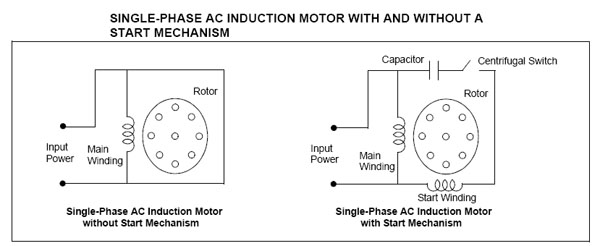Single Phase Induction Motors:
A single phase induction motor has a distributed winding on the stator and normal squirrel-cage rotor as illustrated in Figure. While the rotor is at rest, there is no torque. While fixed stator coil carries alternating current, the MMF wave generated is stationary in space but pulsates in magnitude and varies sinusoidally with time. The currents induced in rotor are in such a direction as to oppose the stator MMF. The rotor currents in the left half are directed opposite to those in the other half. The net torque on the rotor because of interaction of these currents with stator MMF in the vertical axis is zero which results zero torque.
There are two methods of analysing this motor, vis., cross field theory and rotating field theory. The treatment of single-phase induction motor is depending on the revolving field theory. The revolving field theory gives a very simple physical understanding of the topics.
Single-phase induction motors suffer from a severe handicap. As there is only one phase on the stator winding, the magnetic field in a single-phase motor does not rotate. Instead, this pulses, getting first larger and then smaller, but always remaining in the same direction. Because there is no rotating stator magnetic field, a single-phase induction motor has no starting torque. Though, once the rotor begins to turn, and induced torque shall be generated in it.

Figure: Elementary Single-phase Induction Motor